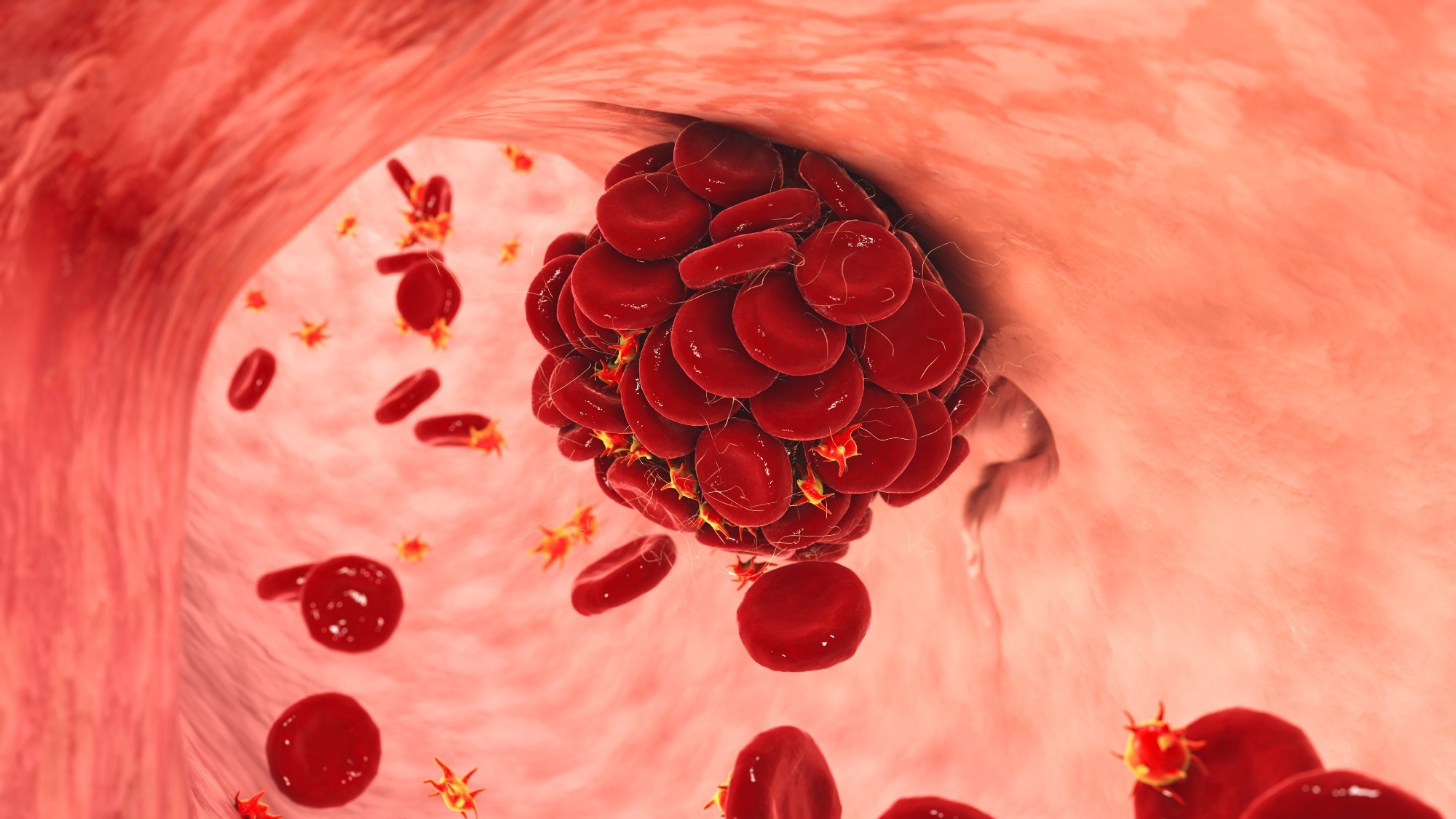In a recent study published in the journal JAMA Network Open, researchers in Canada investigated whether coronavirus disease 2019 (COVID-19) patients with immune-mediated inflammatory diseases (IMIDs) were at a higher risk of experiencing venous thromboembolism events after recovering from severe acute respiratory syndrome coronavirus 2 (SARS-CoV-2) infections as compared to COVID-19 patients without IMIDs.
 Study: Venous Thromboembolism After COVID-19 Infection Among People With and Without Immune-Mediated Inflammatory Diseases. Image Credit: Kateryna Kon / Shutterstock
Study: Venous Thromboembolism After COVID-19 Infection Among People With and Without Immune-Mediated Inflammatory Diseases. Image Credit: Kateryna Kon / Shutterstock
Background
Immune-mediated inflammatory diseases are heterogeneous chronic diseases resulting from an abnormally activated immune system. About 5% to 7% of the population of the Western world are affected by IMIDs, and individuals with IMIDs have a higher risk of venous thromboembolisms as compared to individuals without IMIDs. Rheumatoid arthritis, multiple sclerosis, vasculitis, inflammatory bowel disease, and psoriasis are IMIDs known to increase the risk of venous thromboembolism.
The inflammation in IMID patients causes platelet abnormalities, endothelial dysfunction, fibrinolysis impairments, and abnormal activation of coagulation factors. Recent evidence also indicates that the widespread inflammation and endothelial dysfunction caused by COVID-19 are associated with a higher risk of venous thromboembolisms and multiorgan failure in patients who have recovered from moderate to severe SARS-CoV-2 infections. However, whether COVID-19 compounds the risk of venous thromboembolism in patients with IMIDs remains unknown.
About the study
In the present study, the researchers used population-based data on health administration from Ontario, Canada, to evaluate whether the risk and incidence rates of venous thromboembolisms were higher among individuals with IMIDs who had recovered from COVID-19 as compared to COVID-19 patients without IMIDs.
The data comprised all the interactions the residents of Ontario with valid health cards had with the health care system, including emergency department visits, hospitalizations, outpatient surgeries, and single-day hospital admissions. Additionally, physician billings for all patient interactions were included in the data. The health administrative information was also linked to databases containing demographic information and data on COVID-19 testing and vaccination status.
In the retrospective matched cohort analysis, the researchers matched individuals who had IMIDs and had tested positive for COVID-19 with up to five individuals who had tested positive for COVID-19 but did not have IMIDs. The controls were matched based on factors such as age, sex, urban or rural residence, and the mean income quantile of the neighborhood. Individuals with malignant neoplasm diagnoses five years after a positive COVID-19 test were excluded from the study.
Positive COVID-19 cases were identified based on polymerase chain reaction (PCR) results, while individuals with IMIDs were identified based on physician billings, endoscopy procedure records, and medication prescriptions specific to IMIDs. Hospitalization and emergency department visit data were used to identify venous thromboembolism events. The primary examined outcome was a venous thromboembolism event of any type, with secondary outcomes being events of pulmonary embolism and deep vein thrombosis.
An adapted Charlson Comorbidity Index was used to include comorbidities such as diabetes, chronic obstructive pulmonary disease, or congestive heart failure before the positive COVID-19 diagnosis. Individuals with at least two vaccination doses before the positive COVID-19 diagnosis were considered vaccinated. Additionally, sociodemographic factors such as urban or rural areas of residence, sex, age, socio-economic status, and death before the conclusion of follow-up were also considered during the analysis.
Results
The findings suggested that individuals with IMIDs did not have a significantly higher risk of venous thromboembolisms after recovering from SARS-CoV-2 infections as compared to individuals without IMIDs. Among the 28,440 individuals with IMIDs who were included in the study, the incidence of venous thromboembolism events was 2.64 per 100,000 person days, while in the matched cohorts of individuals without IMIDs, it was 2.18 per 100,000 person days.
However, when the analysis was not adjusted for comorbidities, the individuals with IMIDs had a greater risk of venous thromboembolism events after recovering from COVID-19 than individuals without IMIDs. Furthermore, the findings were similar when the risk of deep vein thrombosis events and pulmonary embolisms were investigated separately.
The presence of other comorbidities was found to confound the association between venous thromboembolism events and IMIDs following SARS-CoV-2 infections. These findings highlight the need for physicians to consider factors such as comorbidities and individual risk factors while prescribing venous thromboembolism prophylactics for IMID patients who have recovered from COVID-19.
Conclusions
Overall, the findings reported that patients with IMIDs are not at greater risk of venous thromboembolism events following SARS-CoV-2 infections as compared to COVID-19 patients without IMIDs. However, some comorbidities can confound the association between IMIDs and venous thromboembolism events related to COVID-19, and physicians need to consider individual risk factors while treating IMID patients for COVID-19 complications.
Journal reference:
- Khan, R., Ellen, K. M., Tang, F., James, Widdifield, J., McCurdy, J. D., Kaplan, G. G., & Benchimol, E. I. (2023). Venous Thromboembolism After COVID-19 Infection Among People With and Without ImmuneMediated Inflammatory Diseases. JAMA Network Open, 6(10), e2337020–e2337020. https://doi.org/10.1001/jamanetworkopen.2023.37020